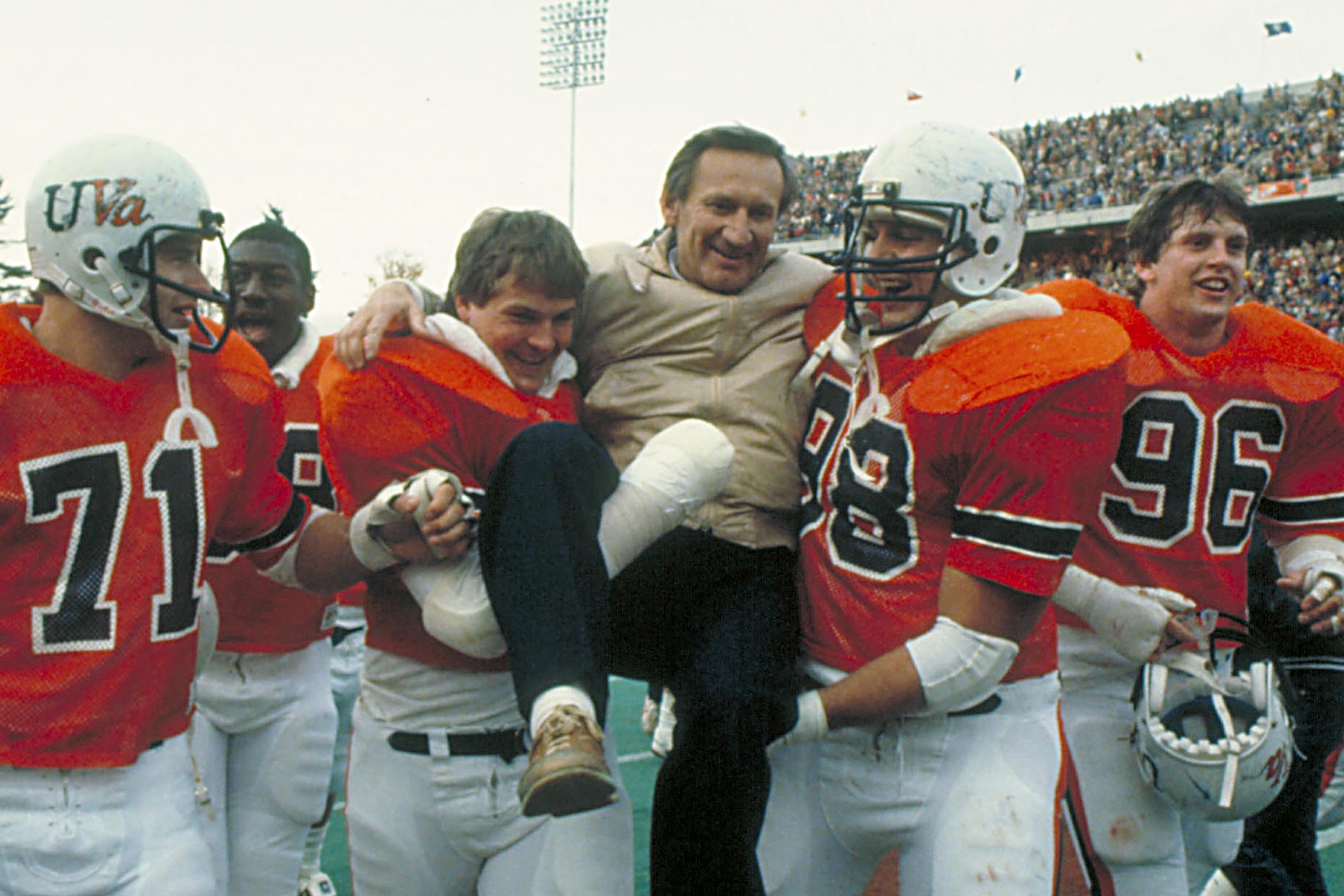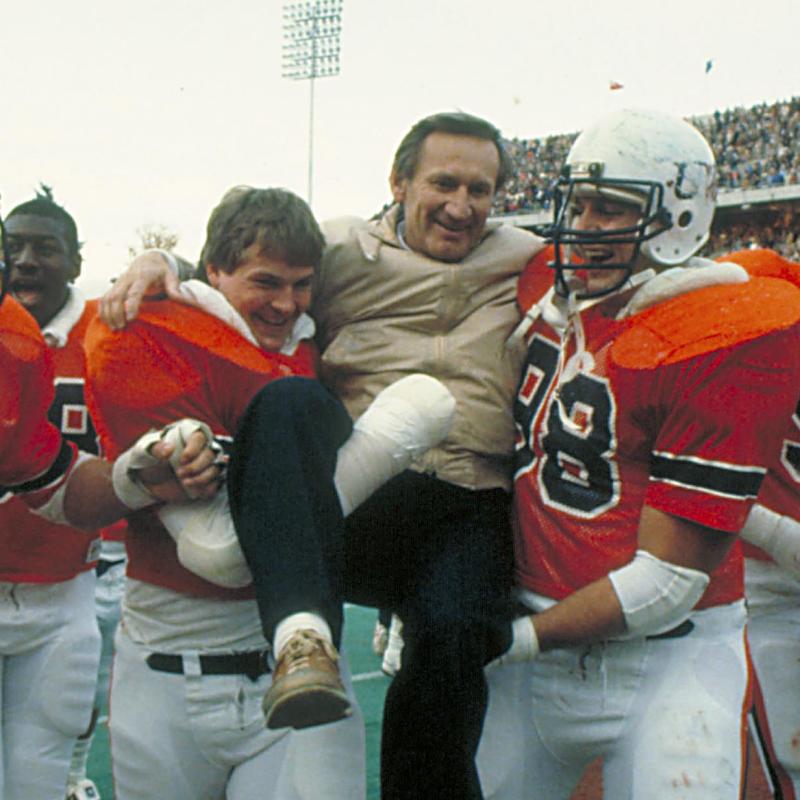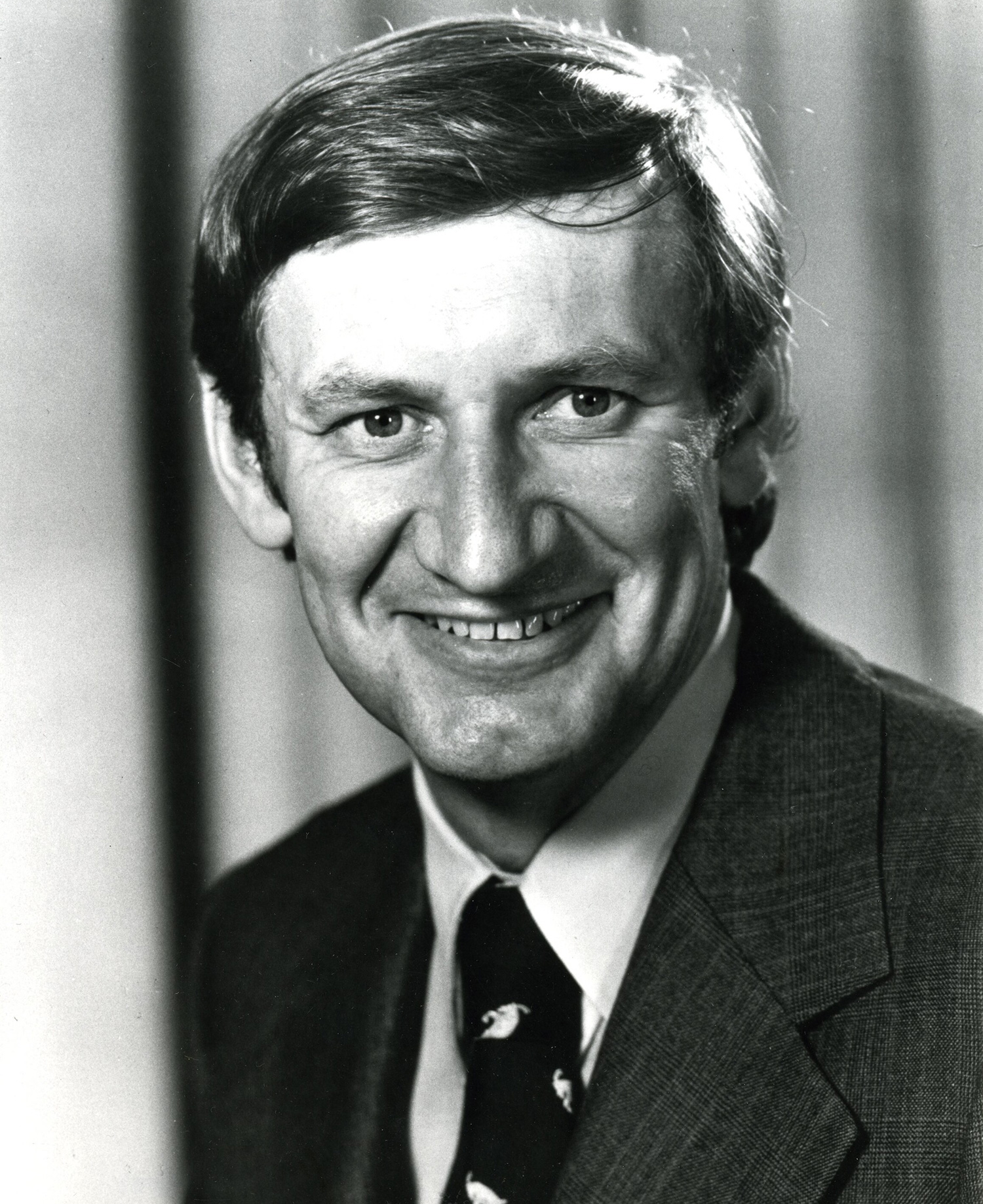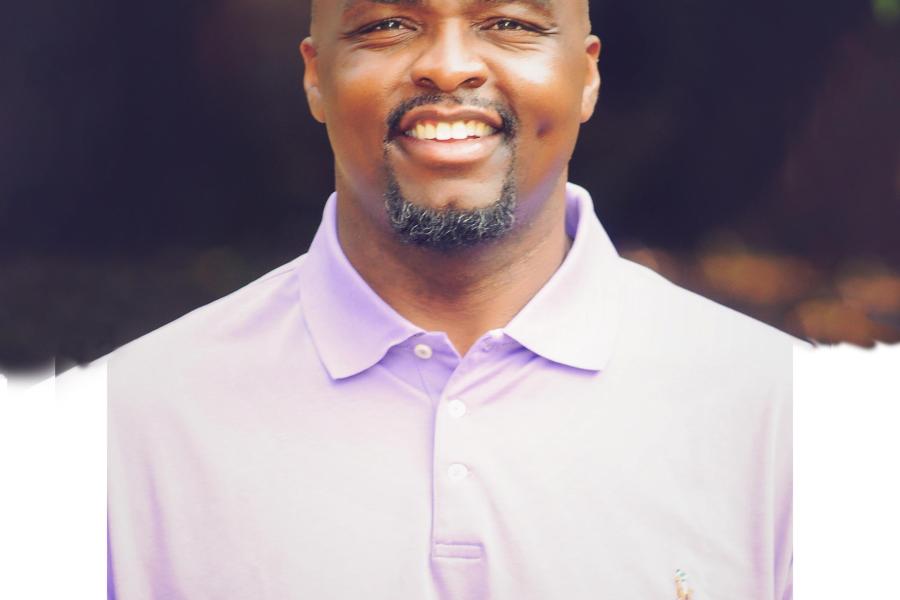Virginia finished 8-2-2 that season after edging Purdue in the Peach Bowl.
“He was a great football coach that took a little and made a lot,” McDaniel said.
Beginning in 1987, the Cavaliers won at least seven games in 13 consecutive seasons. During that stretch, they were co-ACC champions twice (1989 and ’95) and made 11 bowl appearances.
“Having played for a lot of different people at a lot of different levels, what stands out to me the most about Coach Welsh was his integrity,” former quarterback Matt Blundin said. “He did everything the right way. He was just a fair person. He wasn’t going to blow smoke at anybody. He was an honest man.”
Joe Hall started on the defensive line for Virginia and then spent two seasons (1991 and ’92) as one of Welsh’s graduate assistants.
“He truly never played favorites,” Hall said. “His attitude was, ‘This is what’s best for the team and I’m going to do it, and I don’t care whose feathers it ruffles.’”
As a coach, Welsh had many attributes, Hall said, but none greater than his attention to detail.
“You were so prepared,” Hall said. “We had to run every play exactly right and have our technique exactly right, or we’d have to do it again.”
Anthony Poindexter, who was an All-America safety for the Cavaliers, said he remembers “the competitive juice you had to come to practice with. You had to practice, you had to tackle, you had to hit.”
As a junior in 1997, Poindexter became one of the team captains, and he recalls his nerves when he showed up for a meeting with Welsh in the coach’s McCue Center office.
“Even though he wasn’t a big man, he was an imposing figure,” Poindexter said. “I don’t know if people knew how good a heart he had, because of how serious he looked and the way he carried himself. Most guys didn’t know how much compassion he had for the players.”
Moore said: “When it came to football, George knew everything about the Xs and Os and how to win football games and how to be prepared. But in the big scheme of life, I think George was just a shy person.”
Players’ relationships with Welsh often changed once their college careers ended.
“I remember after I graduated him reaching out to me and [then-fiancée] Amy, and he was so happy for us,” Blundin said. “It was a side of him I hadn’t seen.”
Ahmad Hawkins, who played wide receiver and cornerback for Welsh, tells a similar story.
It’s one thing for a coach to follow the NFL careers of his former players, Hawkins said, but Welsh “knew everything I did in Arena ball and all my accomplishments. He’d say how proud he was of you. He cared about all of us.”
Welsh expected his players to take their schoolwork as seriously as they did their football. As a high school standout, Tom Burns considered Notre Dame, Michigan, Ohio State, UVA and Maryland, and he let their coaching staffs know he wanted to major in engineering.
“Of all those schools, every one of them – except Virginia, and this is because of Coach Welsh – either flat out said, ‘We’re not going to have you be in engineering,’ or they were extremely dissuasive,” Burns recalled. “Coach Welsh said, ‘This is unusual, but we’re going to do everything we can to accommodate you.’”
Burns, who started at linebacker for the Cavaliers, ended up earning three degrees in nuclear engineering from the University: his bachelor’s and master’s in 1995 and his Ph.D. in ’98. In 1993, he won what’s now called the William V. Campbell Trophy, often referred to as the “academic Heisman.”
When Burns was an undergraduate, he said, Welsh required all his players to attend study hall. Welsh made an exception for Burns.
“I went to him and said, ‘Coach, I understand the concept here, but it actually costs me an hour a day: a half-hour to walk there and a half-hour to walk back, and I really would like to have that hour back, because I promise you I still study,’” Burns recalled. “He did allow me to do that, and obviously I did take advantage of it and I did study. He was very good to his word.”
As a coach, Welsh “wasn’t a ‘Win one for the Gipper’ speechmaker,” Burns said, “but what he taught me was just a meticulous attention to detail. Our practices had a cadence and an itinerary. Our pregame meals had an itinerary. Everything we did was planned and planned with a purpose, and executed that way.”
Hawkins said: “That was Coach. He was nit-picky. It drove you crazy, but you understood that’s what made the good guys become great.”
In 2010, Moore returned to UVA to join then-head coach Mike London’s staff. His fellow assistants included Poindexter, and they would often see Welsh at the McCue Center.
“I can remember sitting in that lunch room with just me and Dex and Coach Welsh, and we didn’t want to leave,” Moore said.
“We’d just sit there and talk our heads off. I said, ‘Dex, I’ve never seen the guy talk this much.’ We talked about everything. His memory was like an elephant. He remembered everything.”
O’Brien said: “George had a great mind. He never forgot anything. He would come up with some things in staff meetings that happened 10, 12, 15 years ago, and you would think, ‘Holy cow!’ He loved the teaching aspect of the game. He loved the minutiae.”
After leaving Welsh’s staff at UVA, O’Brien became head coach at Boston College and later at North Carolina State. He never forgot the lessons Welsh taught him.
“That was my role model. That was my mentor in how I should coach and everything we did from the organizational standpoint,” O’Brien said.
“I think when I finally made the commitment to be a coach full-time and he hired me at Navy, my whole goal was to try to be as good a football coach as he was, and I promise you I never got close. The bar was so high. But that was the goal.”
As a recruiter, Welsh was anything but a smooth-talking salesman. Still, UVA landed scores of talented recruits during his tenure, including Hawkins, who starred at Hampton High School.
In Hampton, Hawkins lived with his grandmother, who “took a liking to Coach Welsh,” he said. “If it wasn’t for my grandmother’s approval of Coach Welsh, I would have gone to Florida. She said he just felt like a genuine person. When he came to her house, he didn’t talk about football. He asked more about my growth as a man and how I was maturing.”
Hawkins’ grandmother, who recently passed away, allowed Welsh to go where few people, even family members, were permitted: in her living room.
“She let him sit on the good couch with the plastic,” Hawkins recalled, laughing. “I looked at her like she was crazy. I knew something was going on.”
Many of Welsh’s players liked to impersonate their coach’s brusque manner of speaking, and Hawkins’ impression was one of the best. He’d often break it out on his radio appearances in Charlottesville, some of which Welsh heard.
“He would always rib me about doing his impression, and he would laugh,” Hawkins said.
That laugh has been silenced, but Welsh’s legend endures. He was inducted into the College Football Hall of Fame in 2004, and the stamp he put on the UVA football program will not soon fade.
“Coach Welsh was one of a kind,” Hawkins said.






